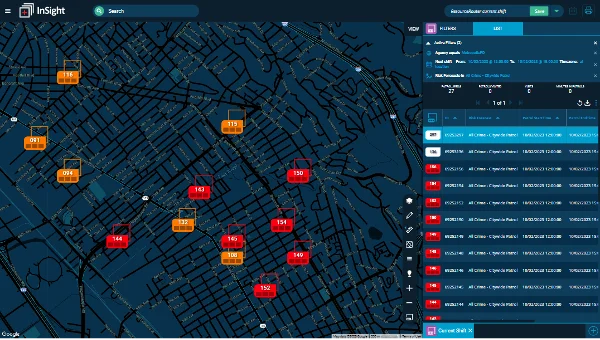Police accountability is essential to functioning democratic societies. It helps ensure officers act within the bounds of the law, improves police-community relations, and enhances police legitimacy. This accountability is two-fold: Internally, it relates to the responsibility that officers have to the law, their supervisors, and their department. Externally, it relates to transparency and integrity of actions, and the responsibility for delivering services to the community within the boundaries of the law. As this blog will explain, these elements of accountability combine, interact, and reinforce one another—and addressing both the internal and external elements of accountability directly is essential for precision policing.
Challenges Caused By Lack of Accountability
Police accountability is not a new issue, but it remains a challenging one for law enforcement, particularly at a time when communities demand transparency, but resources and staff are stretched thin.
In recent years, the highly publicized misconduct of a few has made accountability an important and prevalent topic for the police force, policymakers, and the wider community. Lack of accountability on patrol can result in varied and layered problems for police departments, including misallocation of resources, unlawful officer behavior, negative public perception, damaging media coverage, costly litigation, and federal consent decrees.
To understand how accountability can be improved, it’s important to realize that a law enforcement leader cannot solve department problems or defend officer action without an accurate record of how the department is spending its time. This is why it is so essential for department leaders to have detailed, unbiased data that sheds insight into officer tactics and patrol activities.
Using Technology to Increase Police Accountability
The past decade has seen a concerted effort to increase police accountability, with the advent of new policies and civilian-police partnerships, the implementation of new and improved training, early intervention systems, and increasing numbers of civilian oversight boards.
There are also police patrol management tools, which help agencies send officers out to patrol areas where objective data states that crime is most likely to occur. In doing so, law enforcement leaders can reduce crime and improve police-community relations, while also gaining key insights into officer activities so that they can address issues as they arise.
How ResourceRouter™ Can Help
ResourceRouter is a powerful, data-driven patrol management tool that provides visibility into officer and patrol activities. With four report options, command staff have insights into locations and actions to help optimize patrol strategies and to ensure the accountability of officers.
- The Shift Report shows where officers have been and what they were doing over time. This helps supervisors ensure that officers are spending their time in the most efficient way.
- The Tactic Report measures and evaluates the tactics officers are using to deter crime. This report helps supervisors ensure that officer deployments are appropriate, well-positioned, and sustainable.
- The Officer Report shows how much time was spent on each tactic, which in turn holds the officers accountable for their actions.
- The Crime Type Report displays the average number of minutes spent on directed patrols by officers for each type of crime. This report provides agencies with an overview of issues and helps them to allocate resources efficiently and to the areas most in need.
Outcomes of Increased Accountability
Patrol management software makes it easier for those in charge to see how their officers are spending time during their patrol shifts, allowing them to make personalized recommendations that lead to lasting change. Here are seven ways that increased accountability can help agencies:
Identify and Respond to Officer Behavior
Increased accountability ensures that the behavior of officers is defined by training, policies, and the law. In situations where this is not the case, early intervention is possible because problems are made visible through reporting.
Defend your Department with Data
Incidents of police misconduct have had a profound effect on the public perception of the force as a whole. Accusations alone can result in inquiries and costly litigation. With new patrol management software, you can defend your department and officers using daily datasets that chart their activity.
Support Officers
Police officers want to serve the community by doing their job well and within the law. Greater insight into the work of officers allows command staff to identify what they might need to better achieve their goals, be it technology, project management tools, training, or collaborating with other patrol officers.
Effectively Allocate Resources
Crime is up all across the US and staffing continues to be a big issue. Agencies are stretched thin, so how can we use agency resources in the most optimized way? By providing teams with software that functions as a force multiplier and supports them in their work.
Build Community Trust
Community confidence and cooperation are essential to effective policing, which makes improving police-community relations one of the most critical actions for law enforcement today. With real statistics from patrol in hand each day, agencies can be more transparent with their communities.
Target Police Response
Technology that gathers data from patrols provides insight into what is happening on the ground without bias, helping you allocate resources and better respond to issues affecting your community.
Conclusion
Transparency and accountability are fundamental to the integrity and success of a police department. Without them, we cannot reduce crime, increase safety, or properly serve our communities. ResourceRouter is data-driven, community first, and provides direction on equitable officer activity when and where you need it and insights into patrol operations and their outcomes.







